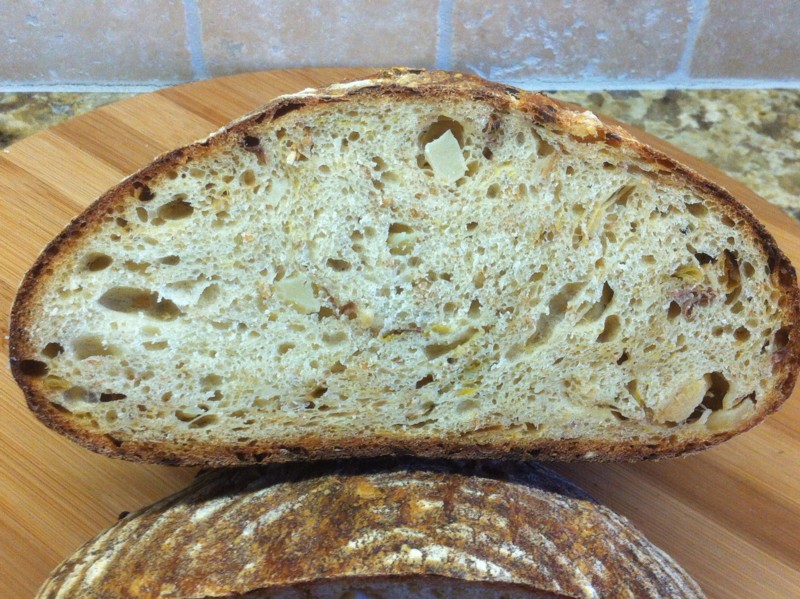Inspired by a recent thread, I decided to tackle creation of a copycat recipe for Joe's Squared pizza from Baltimore. Anyone want to try it out?
Update 1/26/2012: when I first developed this formula and made this over the last 2 days, it started with a very liquid starter (~170% hydration), then to a loose sponge (~114% hydration), to a firm final dough (~59% hydration). It was also created for double the quantity, to ensure that the sourdough build would be successful. I've now updated it based on what I've read and learned about Joe Squared's pizza, as documented later in this tread: generally lower hydration, original bulk ferment, and more fridge time.
Cranbo's Cubed Pizza
Makes about 4 personal-sized (200g) pizzas.
STAGE 1: STARTER
Caputo 00 flour,50g
Water,60g
Sourdough starter,25g; OR use a pinch (1/16 tsp.) of yeast
STAGE 2: SPONGE
Stage 1 starter,135g
Water,200g
Caputo 00 flour,200g
STAGE 3: FINAL DOUGH
Stage 2 sponge,535g
Caputo 00 flour,300g
Water,69g
Vegetable oil,12g
Salt,12g
TOTAL WEIGHT (g) 928g
TOTAL FORMULA
Caputo 00 flour, 100.00%
Water, 60.7%
Oil, 2.15%
Salt, 2.15%
PROCESS
Stage 1:
Dissolve starter in water
Mix with flour until well incorporated
Set aside overnight at room temp (75F for 8-12 hours)
Stage 2:
Dissolve stage 1 starter in water
Mix with flour until well incorporated
Let sit at room temp (75F) for 2 hours
Refrigerate overnight (8-16 hours)
Stage 3:
Next day, let come to room temp for about 30 minutes
Add stage 2 sponge to mixing bowl
Add flour, water and salt
Mixing and Kneading:
Knead for 1-2 min at lowest speed, just until it starts to come together as a ball
Now add oil
Knead for 5 min at medium speed (Kitchen Aid speed #4)
If you're going to use same-day, start preheating oven now to 550F with your pizza stone, sheet steel, or cast iron griddle. You'll need to preheat for at least 1 hour.
Bulk rise:
Let bulk dough rise 2 hours at warm room temp (75F). You can probably go longer if desired; however, you do not want your dough to more than double.
Shaping:
At this point, shape into balls, grease lightly with oil, and refrigerate for future use; OR divide into desired pieces (200g is probably the right size for small individual servings).
Generously flour your rolling surface, and roll out to 1/8-1/4" thick using a rolling pin. If dough is too elastic and springs back, let it rest for 10 min, and try again.
Place pizza dough on cornmeal (on pizza peel or parchment)
For true "cube" square style, use a pizza wheel or a sharp knife to cut a 10 or 11" square.
Top pizza as desired, putting ingredients right up to the edge in true copycat style.
Bake at 550F for 3-7 minutes, until bottom crust is browned and toppings are melted as desired.
UPDATE 2012-01-26: my first bake is in the thread below.

















